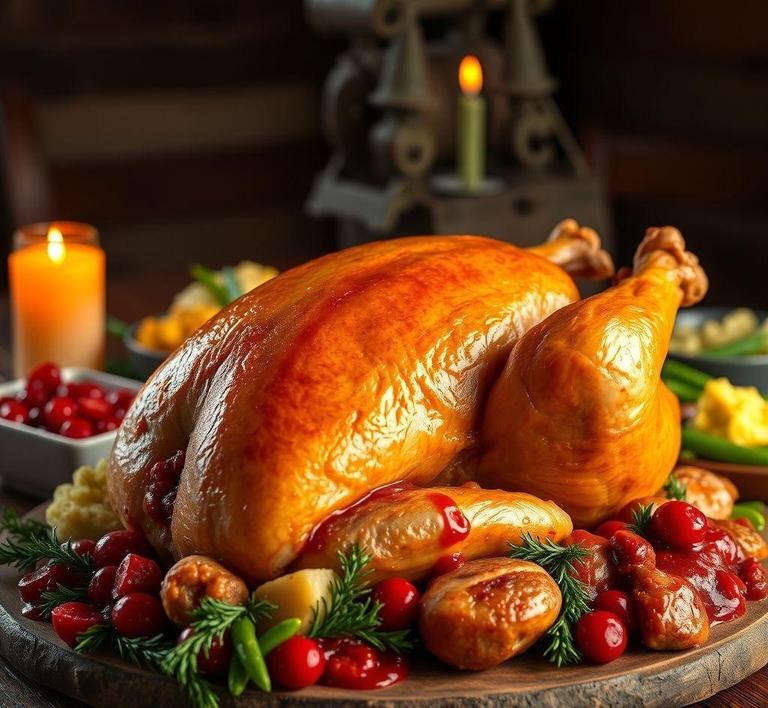If you’ve ever found yourself with leftover turkey meat and wondered whether it’s safe to refreeze, you’re not alone. Refreezing turkey meat can be a bit tricky, but with the right knowledge, it’s totally possible to do safely without compromising on taste or texture. Whether you’ve cooked too much or just want to save some for later, understanding the process of refreezing turkey meat can help you avoid food waste and keep your meals on track. In this guide, we’ll walk you through everything you need to know about how to properly refreeze turkey meat, when it’s safe to do so, and what precautions you should take to ensure your turkey stays fresh and delicious.
Can You Refreeze Turkey Meat?

The simple answer is yes, you can refreeze turkey meat, but with some important caveats. Refreezing turkey meat is a common question, especially around the holidays when we tend to cook more than we need, leaving behind leftovers. The safety and quality of turkey meat after being frozen and thawed depend on several factors, such as how it was thawed, how long it has been stored, and the conditions of freezing and thawing.
Turkey meat, like other poultry, is highly perishable and is susceptible to bacterial growth if handled improperly. However, if you thaw turkey meat in the refrigerator and it hasn’t been at room temperature for more than two hours, it’s generally safe to refreeze it. The real concern with refreezing is the risk of foodborne illness due to bacterial contamination and changes in texture and flavor due to moisture loss.
To clarify, refreezing turkey meat that has been thawed in the fridge is safe from a food safety perspective as long as it hasn’t been sitting out or exposed to the "danger zone" (40°F to 140°F) for too long. Once the meat has been thawed, bacteria can begin to grow, and refreezing it without cooking it first could reintroduce harmful bacteria when you defrost it again.
However, if the meat has been thawed in warm conditions (like on the countertop), it’s best not to refreeze it, as bacteria can multiply quickly in that temperature range, making it unsafe to eat after refreezing.
How To Refreeze Turkey Meat?
Refreezing turkey meat isn’t as simple as just tossing it back in the freezer after it’s been thawed. To ensure the best safety and quality, it’s important to follow a few steps and keep some key points in mind:
- Thaw Properly: If you’re planning to refreeze turkey, always thaw it in the refrigerator and not at room temperature. This method ensures that the meat stays at a safe temperature (below 40°F), minimizing the risk of bacterial growth. You can also thaw turkey meat in cold water, but it must be cooked immediately after thawing, as this method encourages rapid bacterial growth if left too long.
- Inspect the Meat: Before refreezing, check the turkey meat for any signs of spoilage. Look for a sour smell, slimy texture, or any other indicators of deterioration. If the turkey shows any of these signs, it’s best to discard it rather than refreeze.
- Portion It: If you have a large amount of turkey, it’s a good idea to divide it into smaller portions before refreezing. Smaller portions will thaw more quickly and evenly when you’re ready to use them again, reducing the chances of bacterial contamination.
- Use Airtight Packaging: The quality of turkey meat will degrade every time it is exposed to air. To preserve the flavor and texture of the meat, use airtight packaging such as vacuum-sealed bags or tightly wrapped plastic wrap and aluminum foil. Removing excess air helps prevent freezer burn, which can negatively impact the taste and texture of the meat.
- Label and Date: Always label your packages with the date so you can keep track of how long the meat has been frozen. This will help you monitor the meat’s age and ensure you’re using it before it becomes too old. Turkey meat should be consumed within a few months (ideally 3-4 months) after being refrozen for the best quality.
- Refreeze Immediately: Once you’ve prepared the turkey for refreezing, place it back in the freezer immediately to ensure it doesn’t spend too much time in the danger zone. Keep your freezer at 0°F or below to maintain the integrity of the turkey.
Quality Impact
While it’s safe to refreeze turkey meat, it’s important to understand that doing so can affect the quality of the meat. Freezing and thawing alter the texture, flavor, and overall quality of turkey, and each time it is frozen and thawed, it’s likely to degrade further. The primary factors that influence the quality of refrozen turkey include moisture loss, freezer burn, and potential bacterial contamination.
- Moisture Loss and Texture: When turkey meat is frozen, the water inside the cells expands, which can rupture cell walls. Upon thawing, the moisture is lost, and the meat may become dry and tough. This process is made worse each time the meat is frozen and thawed, which leads to a noticeable decrease in tenderness. Therefore, while the turkey may still be safe to eat, it may not have the same juicy, tender texture as when it was first frozen.
- Freezer Burn: Freezer burn occurs when air comes into contact with the meat during the freezing process. This leads to dehydration and oxidation, which causes the meat to become discolored and develop a dry, leathery texture. If you notice ice crystals forming inside the packaging or if the surface of the meat appears pale or dry, it has likely suffered from freezer burn. Although freezer-burned meat is still safe to eat, it can have a poor texture and taste. To avoid freezer burn, always make sure the turkey is wrapped tightly and that all excess air is removed from the packaging.
- Flavor Changes: Repeated freezing can also cause the flavor of turkey meat to suffer. As the texture deteriorates and moisture is lost, the flavor may become bland or stale. While seasoning and sauces can help to mask these changes, they won’t entirely restore the freshness and richness of freshly cooked turkey.
- Risk of Bacterial Growth: Each time turkey meat is thawed, bacteria have a chance to grow, especially if the meat was improperly thawed or left at room temperature for too long. Refreezing turkey meat before cooking it can lock in harmful bacteria, which will then be reactivated when the meat is thawed again. To minimize this risk, always ensure that your turkey has been thawed safely and never left out at room temperature for extended periods.
While refreezing turkey meat is possible, it should be done with caution and care. If you thaw turkey in the refrigerator and it hasn’t been at room temperature for too long, it’s generally safe to refreeze. However, you should be aware of the potential impacts on quality, including changes in texture, flavor, and possible freezer burn.
For the best results, try to limit the number of times turkey is frozen and thawed, as repeated cycles will inevitably reduce the overall quality of the meat. Proper packaging, labeling, and portioning will help preserve both safety and quality.
Ultimately, refreezing turkey is an option for avoiding waste and stretching leftovers, but it should be done thoughtfully to maintain the integrity of the meat. If you’re unsure about whether your turkey is safe to refreeze, err on the side of caution and avoid it to prevent any potential health risks.
Is It Safe To Refreeze Turkey Meat?
Refreezing turkey meat is a subject that raises many questions, especially for those who like to prepare meals in advance or end up with leftover turkey after a holiday feast. The short answer is that it can be safe to refreeze turkey meat, but it depends on how the turkey has been handled and how many times it has been thawed and refrozen.
When turkey is properly thawed in the fridge and then refrozen within a reasonable time frame, it is generally safe to refreeze, although there are important factors to consider. One of the key concerns is the loss of texture and quality with each freezing and thawing cycle. When turkey meat is frozen and thawed, ice crystals form within the cells of the meat, which can damage its fibers. This results in a change in texture, making the turkey potentially more dry or tough when cooked again.
Another significant factor is food safety. If turkey has been left out at room temperature for more than two hours, harmful bacteria can start to multiply, which can survive even through freezing. So, it’s vital to ensure that the turkey has been kept at a safe temperature (below 40°F or 4°C) during every stage of the freezing and thawing process. As long as the turkey has been consistently handled in a way that prevents bacterial growth, refreezing can be safe-but it’s always best to be cautious.
Signs That Turkey Meat Should Not Be Refrozen
While refreezing can be safe in some circumstances, there are clear signs that indicate turkey meat should not be refrozen. These signs typically involve changes in the meat’s appearance, texture, or smell-indicators that the meat has been improperly handled or has exceeded safe storage limits.
- Off Smell: If the turkey has a sour, rancid, or otherwise unpleasant odor, it is a clear sign that bacteria may have started to grow. Even if it was frozen initially, refreezing turkey with an off smell will not make it safe again.
- Discoloration: Fresh turkey meat should be pinkish or light beige in color. If you notice any gray, greenish, or brown patches on the meat, this could indicate spoilage. While some color changes are normal during freezing, extreme discoloration suggests that the meat has gone bad.
- Slimy or Sticky Texture: Turkey should not feel slimy or sticky when touched. If you notice this texture after thawing, it’s a sign that bacteria have likely multiplied on the surface of the meat. If this happens, the turkey is unsafe to eat, let alone refreeze.
- Extended Time Out of the Freezer: If turkey has been thawed and left out of the freezer or refrigerator for longer than 2 hours, or for more than 1 hour in hot weather (over 90°F or 32°C), it should not be refrozen. This is a safety concern, as bacteria grow rapidly at room temperature.
- Freezer Burn: While freezer burn does not necessarily mean that the meat is unsafe to eat, it can significantly degrade the quality of the turkey. Freezer-burned turkey may look dry and have white, frost-like spots, indicating that moisture has been lost. Although it’s still safe to eat, the texture and flavor will be poor, making it less enjoyable once cooked.
Common Refreezing Mistakes
When it comes to handling turkey and other meats, there are several common mistakes that can affect both safety and quality. These errors may seem minor, but they can have significant consequences. Here are the most frequent pitfalls to avoid:
- Not Properly Thawing Before Refreezing: If you thaw turkey on the countertop or in warm water, you risk allowing bacteria to grow to unsafe levels. The safest way to thaw turkey is in the refrigerator, where it can thaw slowly and safely at temperatures below 40°F. If turkey is not thawed properly, refreezing it could lead to bacterial contamination.
- Refreezing More Than Once: The process of thawing and refreezing turkey can degrade its quality significantly. Every time meat is frozen and thawed, ice crystals form and break down the structure of the meat, which leads to dry, stringy texture and a loss of flavor. For the best results, avoid refreezing turkey more than once.
- Not Using Airtight Packaging: If turkey is refrozen without being properly sealed in airtight packaging (like vacuum-sealed bags or heavy-duty freezer bags), air can get in and cause freezer burn. This not only damages the texture of the meat but also causes it to lose flavor and become unappetizing.
- Refreezing Cooked Turkey: While cooked turkey is safe to freeze, it should be cooled completely before being refrozen. If cooked turkey is not chilled properly, bacteria can thrive and multiply, making it unsafe to eat. Additionally, the texture and flavor of cooked turkey can suffer if it’s frozen and thawed multiple times.
- Refreezing Turkey That Has Already Been Left Out Too Long: If turkey has been left out of the refrigerator for too long-whether before being cooked or after cooking-it should not be refrozen. Bacteria can multiply rapidly at room temperature, and freezing the meat after that time doesn’t make it safe to eat.
Tips And Tricks
To help you safely refreeze turkey meat and maintain its quality, here are some valuable tips and tricks:
- Freeze Turkey Promptly: If you have leftover raw turkey, aim to freeze it as soon as possible after purchasing or thawing. The sooner you get it in the freezer, the better its quality will be when thawed and cooked.
- Portion the Turkey: If you have a large amount of turkey, consider cutting it into smaller portions before freezing. This way, you can thaw only the amount you need, preventing repeated freezing and thawing. Smaller portions also freeze more evenly.
- Use Proper Freezer Bags or Containers: Make sure to use high-quality freezer bags or vacuum-seal the turkey to prevent air exposure. If you don’t have access to a vacuum sealer, remove as much air as possible from freezer bags by pressing out the excess air before sealing.
- Label Your Packages: Always label your frozen turkey with the date it was frozen. This will help you track how long it’s been stored and avoid keeping it past the optimal storage time. Turkey can generally be kept frozen for up to 6 months for best quality, though it will remain safe beyond that time.
- Thaw Safely: Always thaw turkey in the refrigerator or under cold running water (if you plan to cook it right away). Avoid thawing on the countertop, as this can lead to the growth of harmful bacteria.
- Cook Thoroughly After Thawing: After thawing and reheating your turkey, ensure that it reaches an internal temperature of 165°F (74°C) to kill any harmful bacteria that might have formed during storage.
Conclusion
Refreezing turkey meat can be safe, but it requires careful handling. By ensuring the turkey is properly thawed and stored, and by paying attention to signs of spoilage, you can enjoy turkey meat that is both safe and flavorful. Always prioritize food safety by keeping turkey at the right temperatures and avoiding refreezing after it has been left out too long or improperly thawed.
While quality may suffer with repeated freezing and thawing, using proper techniques such as vacuum sealing, portioning, and labeling will help minimize these effects. In the end, though, the key to refreezing turkey successfully is vigilance-if the meat looks, smells, or feels off, don’t risk it. If you follow the proper guidelines and take precautions, refreezing turkey can be done safely and conveniently, ensuring you waste less and enjoy your turkey to the fullest.


